intergenerational equity
description: concept of fairness or justice between generations
24 results
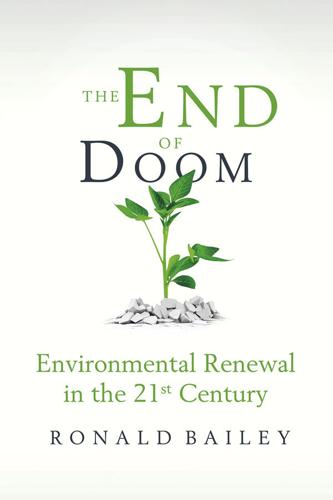
The End of Doom: Environmental Renewal in the Twenty-First Century
by
Ronald Bailey
Published 20 Jul 2015
The World Bank reported in 2012 that fertilizer subsidies in India amounted to 2 percent of that country’s GDP. Agricultural subsidies clearly encourage farmers to overuse fertilizer, which in turn produces nitrous oxide emissions that harm the ozone layer and raise global temperature. Real Intergenerational Equity Comedian Groucho Marx once famously quipped, “Why should I do anything for posterity? What has posterity ever done for me?” Many people are worried about “intergenerational equity” with regard to how global warming will affect future generations. But perhaps Marx had the right question. Consider that University of Groningen economist Angus Maddison calculates that annual per capita income in real dollars in 1900 in Western Europe was $3,200.
…
Per capita income averaged $4,000 in the United States in 1900. Currently, average American income is $30,500 per capita, according to Maddison’s figures. In other words, contemporary Europeans and Americans are around seven times richer than their great-grandparents were three generations ago. The true intergenerational equity question becomes: How much would you have demanded that your much poorer ancestors give up in order to prevent the climate change we are now experiencing? We stand in exactly that same relation to people who will be living in 2100. Total global GDP in 1900 in real dollars was about $2 trillion.
…
See also DDT; endocrine disrupting chemicals China climate negotiations with neodymium from sulfur dioxide emissions in chlorofluorocarbon (CFCs) Christy, John Clayton, Blake Clements, Frederic climate change adaptation climate sensitivity and developing nations’ aid for Dismal Theorem on glacial melting natural disasters and natural variability and ocean acidification and overview political polarization on projections sea-level rise skeptics temperature increase temperature increase hiatus transient climate response and climate change costs and benefits of adaptation of energy innovation of mitigation of natural disaster damage necessity for climate change mitigation by carbon capture and storage by carbon tax by carbon trade costs and benefits economic growth and emergency backup plan for energy consensus and geoengineering innovation for intergenerational equity and by marine cloud whitening negotiations failed negotiations future negotiations promised by nuclear power overview by renewable energy by subsidies cuts by sulfur emissions climate sensitivity coal electric power plants levelized cost comparison of natural gas and subsidies cuts coffee drinking Coffman, Mike cognitive biases collapse, societal commodity prices food and minerals and metals oil peak super-cycles water Condon, Mark confirmation bias corn corporate self-interest cotton cultural commitments theory Curry, Judith dairy industry Darwin, Charles Daschle, Thomas Davis, Margaret DDE (DDT metabolite) DDT (pesticide) agricultural benefits of ban birds harmed by cancer and creation of disease-fighting benefits of metabolism of reproductive problems from Deffeyes, Ken deforestation Delucchi, Mark dematerialization demographic transition.
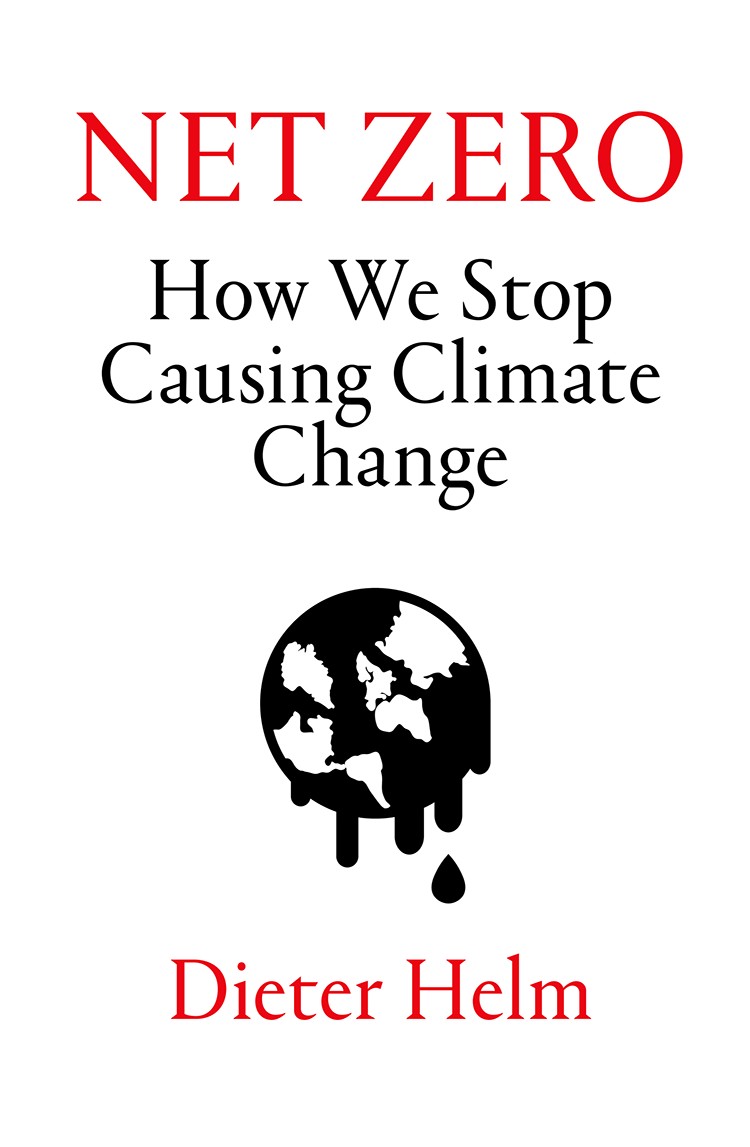
Net Zero: How We Stop Causing Climate Change
by
Dieter Helm
Published 2 Sep 2020
This is efficient: not to price pollution leaves costs out, which do not go away just because they are ignored; not to provide public goods means that lots of necessary building blocks for the economy, and for managing the transition away from carbon, are not in place, and ideas and technologies necessary to beat climate change do not arise; and not to enforce net gain means an economy where excess damage happens. A sustainable economy has to meet intergenerational equity too.[4] It is not just pollution now that counts against efficiency, but also pollution dumped on the next generation. To address this generational point, the sustainable economy needs to meet one further condition: that it passes on to the next generation a set of assets at least as good as those it inherited.
…
If the general problem with GDP growth is that consumption is unsustainably high, it is hard to see how boosting consumption through borrowing is going to make the economy greener. The second problem comes with who gets to inherit the debt. It is the next generation, the young, who will get the pollution we are causing now and that we have already caused, and the debts to pay for clearing it up. This hardly fits with intergenerational equity, and it looks worryingly as if the current older generation of polluters is going to get away with it. The honest activists are right: the current generation should face up to the consequences of its actions, and it should have to pay compensation to the next for the horribly polluted legacy it is bequeathing them.
…
acid rain 25, 194 Africa xiv, xv, 2, 25, 30, 38, 44, 45, 47, 48, 51, 137, 229 agriculture 2, 6, 12, 13, 14, 23, 35–6, 43, 44–5, 70, 76, 86, 87–8, 95, 100, 102, 109, 116, 146–7, 149, 159, 163–80, 181, 183, 192, 197, 198, 206, 220 baseline, the 164–8 biodiversity loss and 2, 5, 100, 164, 165, 168, 169, 171, 172, 174, 180 biofuels and 197–8 carbon emissions and 2, 12, 13, 35–6, 76–7, 146–7, 163–80 carbon price and 167–70, 171, 172, 173, 180 China and 28–9, 35, 45, 180 economics of 76, 165, 166–7, 171, 174 electricity and 13, 166, 168, 174, 178, 180 fertiliser use see fertiliser lobby 14, 110, 164, 165, 169, 170, 197 methane emissions 23, 84, 177, 178, 179 net gain and 172–4 net value of UK 76, 166 new technologies/indoor farming 87–8, 174–9, 180, 213 peat bogs and 2, 179 pesticide use see pesticides petrochemicals and 166 polluter-pays principle and 76, 168–70, 172, 173 pollution 36, 86, 163, 165–6, 168–70, 172, 173, 177–8, 230 public goods, agricultural 170–4, 180 sequestering carbon and 12, 95, 163, 166, 168, 169, 170, 171, 172, 173–4, 177, 179, 180 soils and 2, 146, 163, 164, 165, 166, 168, 169, 171, 172, 175, 179 subsidies 14, 76, 102, 109, 116, 164, 165, 166, 167, 169, 170, 172, 180, 228 25 Year Plan and 179–80 Agriculture Bill (2018), UK 170 air conditioning 135–6, 224, 233 air quality xiii, 13, 25, 46, 52, 61, 70, 135, 153, 177, 180, 201, 216, 230, 232 air transport 3–4, 6, 11, 13, 22, 50, 53, 73, 87, 88, 92, 107, 125, 128, 129, 132, 133, 134, 149, 156–7, 186, 195, 201, 203–5 aluminium 7, 117 Amazon rainforest 2, 34, 35, 95, 145, 149–50, 151, 155, 229, 230 ammonia 35, 137, 191 anaerobic digesters 35, 165, 230 animal welfare 167, 177 antibiotics 93, 165, 174 Arctic 26, 46, 114, 178 artificial intelligence (AI) 32, 175, 220, 231 autonomous vehicles 13, 129, 132, 175, 189–90, 231 Balkans 137–8 Bank of England 121 batteries 6, 31, 131, 135, 141, 183, 184, 185–90, 191, 199, 204, 213, 214, 219, 220, 221, 225, 231 beef 5, 95, 116, 117, 167, 230 Berlin, Isaiah 104 big 5 polluter products 117–18, 120 bin Salman, Mohammad 27 biocrops 36 biodiversity xiv, 2, 5, 12, 13, 28, 35, 51, 76, 94, 100, 148, 149, 152, 153, 158, 159, 164, 165, 168, 169–70, 171, 172, 174, 180, 227, 233 bioenergy 31, 34–5, 36 biofuels 21, 35, 49, 50, 67, 70, 95, 135, 183, 184, 197–8, 210, 230 biomass 32, 34, 49, 50, 67, 69, 109, 146, 147, 151, 210, 217 bonds, government 220 BP 27, 149, 187, 199 Deepwater Horizon disaster, Gulf of Mexico (2010) 147 Brazil 2, 35, 38, 44–5, 47, 95, 145, 149–50, 155, 198 Brexit 42, 47, 56, 117, 165 British Gas 102, 139 British Steel x, 194 broadband networks 6, 11, 90, 92, 125, 126, 127–8, 130–1, 132–3, 135, 140–1, 199, 201, 202, 205, 211, 214, 231, 232 Brundtland Commission 45 BT 127–8, 141 Openreach 214 Burn Out (Helm) ix, xiv Bush, George W. 36, 48, 53, 103 business rates 76, 165 Canada 52, 191, 193 capitalist model 26, 42, 99, 227 carbon border tax/carbon border adjustment xii, 11, 13, 60, 80, 115–20, 194–6, 204 carbon capture and storage (CCS) xiv, 12, 75–6, 95, 109, 146, 147–8, 149, 154, 159, 203–4, 207, 209, 222, 223 Carbon Crunch, The (Helm) ix, xiv, 221 carbon diary 4–5, 8, 10, 11, 64–6, 83, 86, 116, 143, 144, 155, 156, 167, 180, 181, 185, 203, 205 carbon emissions: agriculture and see agriculture by country (2015) 30 during ice ages and warm periods for the past 800,000 years 21 economy and 81–159 electricity and see electricity global annual mean concentration of CO2 (ppm) 19 global average long-term concentration of CO2 (ppm) 20 measuring 43–6 since 1990 1–14, 17–37 transport and see individual method of transport 2020, position in 36–7 UN treaties and 38–57 unilateralism and 58–80 see also unilateralism carbon offsetting xiii–xiv, 4, 5, 12, 34, 45, 72, 74, 79, 94–6, 97, 105, 143–59, 192, 201, 203, 207, 214, 222, 223, 234 for companies 148–50 for countries 151–5 for individuals 155–7 markets 71–2, 110–13, 117, 144, 157–9, 208 travel and 156, 201–3 see also sequestration carbon permits 71–2, 79, 110–13, 117, 144, 208 carbon price/tax xii, xiii, xv, 8, 11, 12, 13, 26, 60, 61, 71, 72, 77, 79, 80, 84, 85–6, 102–3, 105, 106–24, 134, 143, 146, 147, 150, 151–4, 157, 159, 192, 197, 198, 199, 203, 227–30, 232, 234 agriculture and 167, 168, 169–70, 171, 173, 180 domain of the tax/carbon border adjustment xii, 11, 13, 60, 80, 115–20, 121, 124, 192, 194–6, 197, 204, 227 electric pollution and 216–18 ethics of 107–10 floor price 115, 117, 208 for imports 11, 13 prices or quantities/EU ETS versus carbon taxes 110–13 setting 113–15 transport and 192–9 what to do with the money 121–4 where to levy the tax 119–20 who fixes the price 120–1 carbon sinks 2, 5, 166, 169, 203 carboniferous age 34 cars 1, 3, 4, 7, 20, 22, 36, 44, 70, 73, 114, 129, 181, 182, 183, 184–5, 190, 191, 193, 196, 197, 198, 199 see also electric vehicles cartels 39, 40, 43, 45, 46, 47, 56 cattle farming 35, 36, 95, 150, 166, 167, 173, 177, 198 Central Electricity Generating Board (CEGB) 102, 139, 218 cement 6, 7, 26, 29, 34, 87, 117, 171 charging networks, electric vehicle 91, 129–30, 141–2, 184, 185–90, 199, 200, 202, 219 Chernobyl 78 China xi, xv, 1–2, 5, 8, 18, 42, 46, 47, 48, 64, 66, 74, 101, 180, 229 Belt and Road Initiative 28, 45 coal use 1–2, 8, 23–4, 24, 28, 31, 38, 117, 154, 206, 208 Communist Party 2, 27, 42, 46 demand for fossil fuels/carbon emissions 1–2, 8, 18, 20, 22, 23–4, 24, 25, 27–31, 36, 38, 51, 73, 117, 154, 206, 208 export market x–xi, 5, 9, 64, 66, 117, 155, 194 fertiliser use 35 GDP xv, 27, 29 nationalism and 42 petrochemical demand 22 renewables companies 9, 32, 73, 74, 77, 79 Tiananmen Square 42 unilateralism and 58, 59 UN treaties and 46, 47, 48, 53, 54, 55, 58, 59 US trade war 56, 118 Churchill, Winston 183 citizen assemblies 99–101 climate change: carbon emissions and see carbon emissions 1.5° target 38, 57 2° target 1, 10, 22–3, 28, 30, 38, 39, 45, 47, 54, 55, 57, 108, 122, 155, 206 see also individual area of climate change Climate Change Act (2008) 66, 74–7 Clinton, Bill 40, 48 Club of Rome 98 coal 1–2, 5, 8, 13, 20, 23–5, 28, 29, 30, 31, 32, 34, 36, 38, 50, 52, 53, 60–1, 67, 72, 77, 78–9, 101, 109, 112, 116, 117, 119, 134, 136, 145, 147, 148, 151, 154, 155, 182, 183, 194, 196, 206–9, 210, 212, 214, 216, 217, 218, 229, 230 coastal marshes 146, 159 colonialism 45 Committee on Climate Change (CCC), UK x–xi, 7, 74–5, 120, 164, 166, 169, 217, 235 ‘Net Zero: The UK’s Contribution to Stopping Global Warming’ report x–xi conference/video calls 6, 129, 156, 202, 205 Conference of the Parties (COP) xii, 10, 48, 50, 53–4, 55, 59, 205 congestion charges 198 Copenhagen Accord 48, 53–4, 59 Coronavirus see Covid-19 cost-benefit analysis (CBA) 71, 108, 110, 114, 138 cost of living 116 Covid-19 x, xi–xii, 1, 3, 6, 9, 18, 19, 22, 25, 27, 30, 37, 44, 46, 50, 57, 65, 69, 80, 89, 93, 129, 135, 148, 171, 201, 202, 204, 232 CRISPR 176 crop yields 172, 177 dams 2, 36, 52–3, 179 DDT (Dichlorodiphenyltrichloroethane) 100 deforestation 2, 5, 34, 35, 36, 38, 43, 44, 47, 55, 87, 95, 145, 146, 149–50, 155, 172–3, 179, 197–8, 229 Defra (Department for Environment, Food and Rural Affairs) 170 deindustrialisation x, 29, 46, 52, 54, 59, 72–4, 218 Deng Xiaoping 27 Denmark 69–70, 136–7 desalination 135–6, 179 diesel 4, 20–1, 70, 76, 86, 109, 119, 121, 129, 132, 164, 165, 166, 174, 175, 178, 179, 181, 182, 185, 186, 191, 192, 196–7, 208, 217, 230 ‘dieselgate’ scandal 196–7 digitalisation 1, 8, 11, 13, 33, 92, 117, 136, 174, 175, 180, 206, 211, 215, 221, 228–9, 231 DONG 69 Drax 147, 151, 154, 218 economy, net zero 10–12, 81–159 delivering a 96–103 intergenerational equity and 96–7 markets and 103–5 net environmental gain see net environmental gain political ideologies and 98–101 polluter-pays principle see polluter-pays principle public goods, provision of see public goods, provision of technological change and 98 EDF 139, 218 Ehrlich, Paul 98 electricity 1–2, 4, 6, 11, 12, 13, 23, 31, 32, 49, 53, 61, 65, 66, 68, 70, 73, 77, 78, 79, 91, 92, 101, 102, 109, 117, 125, 127, 128, 129–30, 131–2, 134, 135, 136, 137, 139, 140, 141, 149, 158, 166, 168, 174, 178, 180, 182, 183, 228, 229, 231, 232, 234, 235 coal, getting out of 206–7 electric pollution and the carbon price 216–18 electric vehicles 4, 6, 13, 20, 23, 49, 61, 91, 92, 94, 121, 125, 128, 129–30, 131–2, 134, 141, 183–92, 193, 194, 197, 200, 201, 202, 206, 219, 228 equivalent firm power auctions and system operators 210–16 future of 206–25 gas, how to get out of 207–9 infrastructure, electric 185–90, 218–20 low-carbon options post-coal and gas 209–10 net gain and our consumption 222–5 R&D and next-generation renewables 220–2 renewable see renewables Energy Market Reform (EMR) 219 equivalent firm power (EFP) 212–16, 217, 220 ethanol 35, 71, 95, 197 eucalyptus trees xiv, 152 European Commission 60, 71, 72, 112 European Union (EU) xiv, 2, 7, 8, 9, 37, 42, 44, 46, 47, 117, 137, 165, 166, 197; baseline of 1990 and 51–2 Common Agricultural Policy (CAP) 76, 165 competition regime and customs union 56 deindustrialisation and 46, 52, 54, 59, 72–4 directives for 2030 66 Emissions Trading System (EU ETS) 71–2, 73, 79, 110–13, 117, 144, 208 importing carbon emissions 59 Internal Energy Market (IEM) 68, 71 Kyoto and 9, 51, 59, 66–7 Mercosur Agreement 44, 95 net zero target for 2050 66, 115, 143, 155, 167, 180 Paris and 54 Renewable Energy Directive 68–71, 73, 109 2020 targets signed into law 66 2020–20–20 targets 67, 69, 74 unilateralism and 59, 66–71, 80 Eurostar 133 externalities 104, 170, 180, 196 Extinction Rebellion 6 farmers 14, 26, 35, 36, 43, 71, 76, 86, 95, 102, 109, 110, 146–7, 164, 165, 166, 169, 170, 174, 175, 196, 197, 198 fertiliser 4, 6, 7, 26, 29, 35, 61, 73, 86, 87, 116, 117, 119, 163, 165, 169, 174, 175, 178, 179, 191, 194, 197 fibre/broadband networks 6, 11, 90, 92, 125, 126, 127–8, 130–1, 132–3, 135, 140–1, 201, 202, 205, 211, 214, 231, 232 financial crisis (2007/8) 1, 19, 69 first-mover advantage 75 First Utility 199 flooding 13, 77, 149, 152, 153, 159, 170, 233 food miles 167 food security 170–1 food waste 178, 180, 231 Forestry Commission xiv Formula One 186, 196 fossil fuels, golden age of 20–5 see also individual fossil fuel France 46, 47, 52, 56, 73, 78, 101, 113, 130, 136, 138 free-rider problem 39–40, 43, 62–4, 106, 119 fuel duty 121, 195–6 fuel efficiency 197 fuel prices 26, 112–13, 209 fuel use declaration 195 Fukushima Daiichi nuclear disaster (2011) 52, 78 Fukuyama, Francis: The End of History and the Last Man 40–1 gardens 6, 43, 143, 156 gas, natural ix, 2, 5, 8, 20, 23, 24, 25, 26, 29, 31, 32, 36, 50, 52, 68, 69, 79, 102, 109, 117, 119, 129, 136, 137, 146, 147–8, 149, 183, 190, 193, 194, 207–9, 210, 211, 214, 216–17 G8 47 gene editing 172, 176, 231 general election (2019) 121 genetics 98, 172, 174–6, 231 geoengineering 177 geothermal power 137, 178 Germany 9, 30, 47, 52, 59, 60, 62, 66, 67, 69, 70, 71, 72, 73, 75, 77–80, 83, 91, 101, 112, 136, 137, 138, 144, 206, 208, 209 Energiewende (planned transition to a low-carbon, nuclear-free economy) 59, 69, 77–80, 112, 144, 208 Gilets Jaunes 101, 113 GMOs (genetically modified organisms) 176, 177 Great Northern Forest, Britain 151 Green and Prosperous Land (Helm) xiii, xiv, 165, 169, 234 greenbelt 173 greenhouse effect 17 green new deal 90, 102, 234 green parties/green votes 69, 77, 78 green QE (quantitative easing) 102–3 green walls 153, 231 greenwash 156 gross domestic product (GDP) xii, xv, 1, 25, 27, 29, 41, 57, 59, 73, 76, 83, 93, 98, 103, 133, 165, 207, 227, 229, 233 growth nodes 133 G7 47 G20 47 Haber-Bosch process 35, 163 Hamilton, Lewis 186 ‘hands-free’ fields 175 Harry, Prince 6 Heathrow 133, 134 hedgerow 76, 166, 167, 172 Helm Review (‘The Cost of Energy Review’) (2017) ix, 120, 141, 200, 210, 212, 215, 217, 220, 238 herbicide 163 home insulation 102 House of Lords 170 housing 101, 223–4 HS2 92, 125, 132–4, 138, 202 Hume, David 49 hydrogen 13, 49, 92, 125, 128, 135, 137, 183, 184, 190–2, 199, 200, 204, 206, 213, 228 hydro power 31, 35, 36, 50, 52–3, 70, 136, 137, 191 Iceland 137, 178 imports x–xi, xiii, 5, 8, 10, 11, 12, 13, 62, 68, 70, 117–18, 155, 167, 178, 173, 180, 196, 227 income effect 72, 111 income tax 121, 122, 232 India xiv, xv, 25, 30, 31, 38, 43, 44, 47, 48, 51, 54, 55, 57, 154, 229 individuals, net zero for 155–7 Indonesia 2, 35 indoor farming 87–8, 177–8, 180, 213 indoor pollutants 223, 232 Industrial Revolution 1, 18, 19, 25, 47, 116, 145 INEOS Grangemouth petrochemical plant xi information and communications technology (ICT) 117, 202, 231 infrastructures, low-carbon xiii, xiv, 11–12, 14, 28, 60, 62, 65, 66, 90, 91–4, 96, 105, 109, 123, 125–42, 143, 147, 151, 154, 159, 171, 184, 186, 187, 190, 199–200, 214, 218–20, 228, 230, 231–2, 234–5 centrality of infrastructure networks 128–30 electric 125–41, 218–20 making it happen 141–2 net zero national infrastructure plan 130–6 private markets and 125–8, 141–2 regional and global infrastructure plan 136–7 state intervention and 126, 127–8, 141–2 system operators and implementing the plans 138–41 inheritance tax 76, 165 insects 164, 177, 231 insulation 102, 224 Integrated Assessment Models 114 intellectual property (IP) 75 Intergovernmental Panel on Climate Change (IPCC) 17–18, 47, 55, 57, 108, 172 internal combustion engine 13, 22, 181–2, 183, 184, 200, 221, 228 Internal Energy Market (IEM) 68, 71, 138 International Energy Agency (IEA) 25, 207 International Monetary Fund (IMF) 51 internet banking 131, 213 internet-of-things 128, 175 Iran 27, 42, 113, 137 Iraq 56, 192 Ireland 43, 157 Italy 137, 182 Japan 27, 28, 30, 52, 73, 78, 101, 185 Jevons Paradox 224 Johnson, Boris 89–90 Kant, Immanuel 104 Keynes, John Maynard 89, 102, 103, 105 Kyoto Protocol (1997) xii, 2, 7, 9, 13, 17–18, 37, 38, 39, 40–1, 47–8, 49, 51, 52–3, 59, 66–7, 119 laissez-faire 104, 138, 188 land use 35, 61, 95, 172, 237 LED (light-emitting diode) lighting 87, 178, 179, 180, 213 liquefied natural gas (LNG) 136, 183 lithium-ion battery 185 lobbying 10, 14, 33, 69, 71, 109, 110, 111–12, 115, 121, 157, 169, 170, 187, 197, 209, 223, 227, 228 location-specific taxes 194 maize 35, 165, 197 Malaysia 2, 229 Malthus, Thomas 98 Mao, Chairman 27, 42 meat xi, 65, 164, 177, 180, 232 Mekong River 2, 28, 179, 229 Mercosur Agreement 44, 95 Merkel, Angela 78 methane 4, 23, 84, 177, 178, 179, 216 microplastics 22 miracle solution 49–50, 55, 209 mobile phone 5, 125, 185 National Farmers’ Union (NFU) 110, 164, 165, 169, 170, 171 National Grid 139, 141, 189, 200, 211, 214, 219 nationalisations 101–2, 126–7 nationalism 41, 43, 55, 56, 138 nationally determined contributions (NDCs) 54–5 natural capital xiii, 14, 33–6, 51, 85, 86, 88, 90, 94, 97, 154, 158, 168, 171, 173–4, 236 Nature Fund 123, 169, 234 net environmental gain principle xiii, xiv, 10, 12, 62, 84, 94–6, 105, 143–59, 169, 172–4, 192, 201–3, 222–5 agriculture and 169, 172–4 carbon offsetting and see carbon offsetting electricity and 222–5 principle of 94–6, 143–4 sequestration and see sequestration transport and 192, 201–3 Netherlands 138 Network Rail 214 net zero agriculture and see agriculture defined x–xv, 3–14 economy 10–12, 81–159 see also economy, net zero electricity and see electricity transport and see individual method of transport 2025 or 2030 target 89 2050 target x, xi, 5, 59, 66, 74, 75, 115, 120, 135, 143, 155, 167, 169, 180, 184, 216, 217, 222, 226, 230, 231, 232 unilateralism and see unilateralism NHS 65 non-excludable 91, 93, 126, 170 non-rivalry 91, 93, 126, 170 North Korea 42 North Sea oil/gas 9, 40, 75, 97, 102, 137, 139, 147, 148, 193 Norway 130, 137, 191 nuclear power 5, 9, 12, 18, 23, 52, 60, 73, 77–9, 109, 125, 128, 129, 136, 140, 178, 194, 199, 206, 207, 208, 209–10, 212, 214, 216, 218, 219, 222, 228 Obama, Barack 48, 53, 54, 59 oceans 2, 14, 22, 33, 85, 86, 88, 148, 163, 231 offsetting see carbon offsetting offshore wind power 31, 69, 75–6, 208, 212, 219, 221 Ofgem 220 oil ix, 2, 20, 22–3, 25, 26, 27, 31, 32, 33, 36, 39, 40, 50, 67, 69, 86, 97, 117, 119, 129, 136, 137, 146, 147, 148–9, 150–1, 152, 181–3, 184, 185, 187, 189, 190, 192–4, 196, 197, 199, 206, 209, 210, 216–17, 229 OPEC 39, 40, 193 Orbán, Viktor 41, 42 organic food 61, 87, 178 Ørsted 70 palm oil 2, 5, 6, 35, 36, 66, 71, 167, 173, 197–8, 230 pandemic see Covid-19 Paris Climate Change Agreement (2015) xii, 2, 10, 13, 18, 30, 37, 38, 39, 48, 49, 54–5, 56, 57, 58, 66, 80, 105, 106, 118, 119, 227 peat bogs xiv, 2, 13, 14, 33, 35, 36, 43, 109, 146, 169, 179 pesticides 4, 26, 61, 163, 165, 169, 174, 178, 231 petrochemicals xi, 7, 8, 20, 22–3, 29, 73, 80, 86, 117, 166, 182 petrol 4, 86, 119, 121, 129, 185, 186, 187, 191, 192, 199 photosynthesis 34, 197 plastics 1, 22, 28, 35, 43, 66, 86, 87, 119, 143, 166, 184, 231 polluter-pays principle xiii, xv, 84–90 agriculture and 76, 168–70, 172, 173 carbon price and see carbon price/tax generalised across all sources of pollution 86 identifying polluters that should pay 86 importance of 10–11, 13, 61, 62, 65 intergenerational balance and 96–7 net environmental gain and 94 sequestration and see sequestration, carbon sustainable economy and 96–7, 105, 106 transport and 192–5, 198–9 see also individual type of pollution population growth 93, 97, 177, 178, 179, 232 privatisation 127, 140, 218–19, 220 property developers 94 public goods, provision of xiii, 10, 11–12, 62, 75, 84, 90–4, 96, 104, 105, 109, 122, 123, 126, 128, 141, 147, 151, 153, 159, 164, 168, 173–4, 180, 192, 199–200, 202, 218, 229, 230 agricultural 170–4, 180 low-carbon infrastructures see infrastructures, low-carbon research and development (R&D) see research and development (R&D) Putin, Vladimir 27, 41, 42, 89 railways 11, 13, 13, 87, 91, 92, 94, 125, 128, 129, 130, 131, 132–3, 138, 139, 156, 182, 183, 187, 202, 212, 214, 232 rainforest 2, 5, 34, 35, 36, 38, 44, 47, 55, 87, 95, 145, 149, 155, 173, 179–80, 197, 229 rationalism 40–1 Reagan, Ronald 103 red diesel 76, 109, 164, 165, 196 regulated asset base (RAB) 127, 141, 215, 220 remote working 128, 156, 201–2, 205 renewables ix, 6, 8, 9–10, 18, 19, 21, 26, 31–5, 36, 49, 50, 55, 61, 67, 72, 77, 79, 85, 86, 109, 110, 112, 123, 125, 128, 131, 135, 138, 140, 144, 149, 178, 188, 191, 194, 197, 199, 207, 209–10, 211, 212, 213, 214, 215, 216, 217, 219, 220–2, 224, 228 Chinese domination of market 9, 32, 73, 74, 77, 79 cost-competitiveness of 9–10, 49, 51, 61, 68 failure of, 1990-now 19, 31–3, 36 modern global renewable energy consumption measured in TWh per year 32 miracle solution and 49–51 Renewable Energy Directive 68–71, 73, 109 subsidies ix, 9, 10, 50, 68–9, 71, 79, 80 see also individual renewable energy source Renewables UK 110 research and development (R&D) xiv, 12, 13, 14, 62, 65, 66, 90, 93–4, 104, 109, 123, 165, 172, 192, 200, 218, 220–2, 223, 228, 234 reshoring businesses 8, 204 rivers 2, 22, 28, 86, 128, 152, 165, 169, 179, 214, 230 roads 11, 28, 45, 91, 92, 125, 129, 131–2, 140, 165, 182, 189, 194, 198, 202, 232 robotics 32, 175, 204, 206, 231 Rosneft 26 Royal Navy 183 Russia 26, 27, 30, 40, 42, 44, 45, 46, 47, 48, 50, 52, 55, 56, 192, 193 RWE 139, 218 Ryanair 156–7 rye grass 35 salmon 169, 177 Saudi Arabia 26, 33, 40, 42, 50, 137, 192, 193 Saudi Aramco 26, 50 seashells 34 sequestration, carbon xi, xiv, 12, 61, 66, 85, 90, 95, 143–59, 228, 229, 231, 232 agriculture and 12, 163, 166, 168, 169, 170, 171, 172, 173, 176–7, 179, 180 baseline definition and 146–7 biofuels and 35, 146, 217 carbon capture and storage (CCS) xiv, 12, 75–6, 95, 109, 146, 147–8, 149, 154, 159, 203–4, 207, 209, 222, 223 companies, net zero for 148–51 countries, offsetting for 151–5 electricity and 222, 223 gas and 207 individuals, net zero for xi, xiv, 155–7 markets, offsetting 157–9 natural capital destruction and 2, 19, 33–6, 44, 45, 51 natural sequestration xi, xiii, 2, 7, 12, 14, 33–6, 37, 45, 52, 66, 85, 90, 94–6, 105, 143–59, 163, 168, 171, 173, 176–7, 179, 180, 203, 206, 207, 222, 223 net gain principle and 143–4, 146, 149–50 offsetting principle and 143–5 peat bogs and see peat bogs principle of xi, xiii, 2, 7, 12–13 soils and see soils transport and 185, 190, 203 tree planting and see trees, planting/sequestration and types of 145–8 wetlands/coastal marshes and 146, 159, 233 shale gas 8, 208 Shell 27, 149, 199 shipping 8, 13, 22, 28, 36, 49, 114, 125, 137, 181, 182–3, 191, 194–5, 203–5, 217 Siberia 2, 46 smart appliances 128, 129, 132 smart charging 11, 13, 128, 129, 130, 139, 214, 219 soils xiii, 2, 5, 7, 12, 14, 33, 35, 36, 43, 55, 76, 109, 146, 149, 152, 156, 159, 163, 164, 165, 166, 168, 169, 171, 172, 175, 179, 203, 228 solar panels/solar photovoltaics (PV) 5, 6, 9, 12, 13, 21, 31, 32, 33, 49, 53, 68, 69, 71, 74, 79, 87, 91, 135, 136, 137, 178, 179, 188, 204, 207, 208, 209, 210, 211, 213, 214, 216, 217, 221, 222, 223, 224–5 Sony 185 Soviet Union 18, 40, 52, 67–8, 89 soya 95 Spain 69, 130, 137 sport utility vehicles (SUVs) 106, 121, 192 spruce xiv, 152, 170 standard of living xv, 1, 5, 8, 10, 11, 14, 229, 233 staycations 201 steel x–xi, 6, 7, 8, 26, 28, 29, 53, 66, 73, 80, 87, 116, 117, 118, 119, 171, 184, 194–5 Stern, Nicholas: The Economics of Climate Change 41, 63 subsidies ix, 9, 10, 14, 32, 50, 51, 52, 53, 69, 71, 76, 79, 80, 89, 102, 109, 110, 113, 116, 123, 140, 154, 164, 165, 166, 167, 169, 170, 172, 180, 193, 196, 198, 209, 215, 221, 222, 228, 230 sugar cane 35, 71, 95, 197, 198 sulphur pollution 22, 25, 28, 78, 191, 194, 197, 230 sustainable economic growth xv, 10, 12, 14, 61, 83, 92, 94, 97, 98, 105, 227, 233 Taiwan 42 taxation xii, 11, 62, 71, 72, 76, 80, 87, 89, 90, 91, 92, 97, 101, 102, 103, 106–24, 126, 127, 130, 133, 147, 150, 151–2, 153–4, 157, 159, 165, 169, 170, 192–6, 197, 198, 199, 203, 232, 234 technological change 98, 127, 141, 174–5, 221 Thatcher, Margaret 17 Thompson, Emma 6 3D printing 175, 204 Thunberg, Greta 6, 205 tidal shocks 159 top-down treaty frameworks 13, 38–57, 80, 110, 119 tourism/holidays 6, 22, 36, 88, 94, 107, 114, 128, 156, 201, 204–5 transport, reinventing 181–205 aviation 195, 201, 203–5 see also air transport batteries and charging networks 185–90 biofuels 196–8 electric alternative 183–5 hydrogen and fuel cells 190–2 innovation, R&D and new infrastructures 199–200 internal combustion engine 181–2 net gain and offsets (reducing travel versus buying out your pollution) 201–3 oil 183–4 polluter pays/carbon tax 192–6 shipping 203–5 urban regulation and planning 198–9 vehicle standards 196–8 see also individual type of transport Treasury, UK 120–2 trees, planting/sequestration and xi, xiii, xiv, 2, 7, 13, 14, 33, 34, 45, 76, 85, 94–6, 146, 148, 149–51, 152–3, 155, 156, 157, 158, 159, 168, 169, 172, 179, 203, 231 trophy project syndrome 133 Trump, Donald 2, 8, 41, 42, 48, 89, 99, 103, 121 25 Year Environment Plan xiii, 153, 170, 179–80 UK 47, 69 agriculture and 164, 166, 167, 173 carbon emissions (2015) 30 carbon price and 115, 120 Climate Change Act (2008) 66, 74–7 coal, phasing out of 24–5, 60–1, 77, 208 Committee on Climate Change (CCC) x–xi, 7, 74–6, 120, 164, 166, 169, 217, 235 deindustrialisation and 72–4 80 per cent carbon reduction target by 2050 74 electricity and 206, 208, 218, 219, 224 Helm Review (‘The Cost of Energy Review’) (2017) ix, 120, 141, 200, 210, 212, 215, 217, 220, 238 infrastructure 125, 132–3, 134, 137, 139–40 net zero passed into law (2019) 66 sequestration and 145, 150, 153, 154, 155, 156 transport and 195–6, 197, 198 unilateralism and 58–9, 60–1, 65, 66, 69, 72–7, 80 unilateralism xi, 8, 10, 11, 25, 58–80, 83, 105, 106, 119, 125, 143, 144, 155, 164, 167, 197, 203, 227 in Europe 66–80 incentive problem and 58–60 morality and 62–6 no regrets exemplars and/showcase examples of how decarbonisation can be achieved 60–2 place for 80 way forward and 80, 83 United Nations xi, xii, 6, 10, 17, 37, 38, 118 carbon cartel, ambition to create a 39–40, 43, 45, 46–7, 56 climate treaty processes xi, 6, 10, 13, 17–18, 36, 37, 38–57, 59, 80, 110, 118, 119, 204–5 see also individual treaty name Framework Convention on Climate Change (UNFCCC) 17–18, 36, 38, 59 miracle solution and 50–1 origins and philosophy of 41 Security Council 46, 47, 57 United States 8, 74, 139, 206 agriculture in 175, 176, 197 carbon emissions 8, 29, 30 China and 27–8, 42, 118 coal and 2, 24, 28, 29, 208 economic imperialism 45 energy independence 50 gas and 8, 20, 23, 24, 29, 50, 208 oil production 40, 50, 193 pollution since 1990 29 unilateralism and 58, 59, 74 UN climate treaty process and 38, 40–1, 44, 45, 46, 47, 48, 53, 54, 56 universal service obligations (USOs) 92, 126, 131, 202 utilitarianism 41, 63–4, 108, 110 VAT 117, 119–20, 121, 122, 232 Vesta 69 Volkswagen 196–7 water companies 76, 214, 230 water pollution/quality xiv, 12, 22, 61, 76, 152, 153, 165, 169, 170, 171, 172, 175, 177, 178, 179, 180, 232 Wen Jiabao 53, 59 wetlands 159, 233 wildflower meadow 164, 184 wind power 5, 9, 12, 21, 31, 32, 33, 49, 53, 68, 69–70, 71, 74, 75, 76, 78, 79, 91, 135, 136, 137, 138, 139, 178, 188, 191, 207, 208, 209, 210, 211, 212, 213, 214–15, 216, 217, 219, 221, 222 wood pellets 67, 217, 230 Woodland Trust 156, 158 World Bank 51 World Trade Organization (WTO) 52, 56, 118 World War I 183 World War II (1939–45) 78, 90, 92, 101, 106, 171 Xi Jinping 27, 41, 42 ACKNOWLEDGEMENTS So much is now discussed, written and published about climate change that it is impossible to keep track of all the ideas and conversations that have influenced my understanding of the subject.

Green Swans: The Coming Boom in Regenerative Capitalism
by
John Elkington
Published 6 Apr 2020
Used at the right time, in the right way, such provocations can force us to rethink and, when truly effective, to move toward some form of enlightenment. The further we dig into the relationships between capitalism and democracy, the more sustainability looks like the natural bridge between the two, focusing as it does on intergenerational equity and balanced, inclusive, and environmentally sustainable value creation and distribution over extended timescales. My decision to attempt the recall, even as a kōan, stemmed from my sense that the triple bottom line operating system I had helped create has an intrinsic weakness when used by people, however well intentioned, subject to incentive systems that powerfully focus on short-term Horizon 1 targets.
…
Its high-end engineering skills may become less relevant as the role of software and imported batteries grows.50 Elsewhere, we could see “fire sales” of carbon intensive assets as the risks of stranded assets in the fossil fuels sector grow, destabilizing the financial system, warned Bank of Canada governor Stephen Polos.51 So, whether they are designing cars or economic and political systems, tomorrow’s designers will need to take sustainability considerations into account to a far greater degree than in the past. In the process, they will need very different perspectives on Horizons 2 and 3, with an emphasis on resilience, regeneration, and, the very essence of sustainability, intergenerational equity. They will need new icons, models, and gurus. One I have long admired in the regeneration space, and who also spoke at our first Green Swan Day event, is Sir Tim Smit of the Eden Project. When the Eden Project team say that sustainability is at the heart of everything they do, they mean it—and have done their level best to make it part of the Eden reality.
…
Giving a commencement address at Stanford, he warned his Silicon Valley compatriots, “If you have built a chaos factory, you can’t dodge responsibility for the chaos.”19 Some of these problems can be solved fairly quickly, but others—including the implications of the burgeoning surveillance state—represent intergenerational challenges. Which brings us back to that comment about the last generation able to do very much about the state of our planet. The heart of the sustainability agenda has always been intergenerational equity.20 Indeed, much of my own work has been driven by a growing sense that we need stronger, longer, and wider bridges across our generational divides. Occasionally, inevitably, this bridge-building urge has got me into trouble, as when I helped persuade twenty-plus CEOs and business leaders to sign a letter to The Times newspaper supporting the agenda advanced by Extinction Rebellion, known as XR.21 At the time, XR’s peaceful occupation of iconic sites like Trafalgar Square and Waterloo Bridge, just outside our London office, had begun to spark pushback from retail businesses impacted by the blockades.
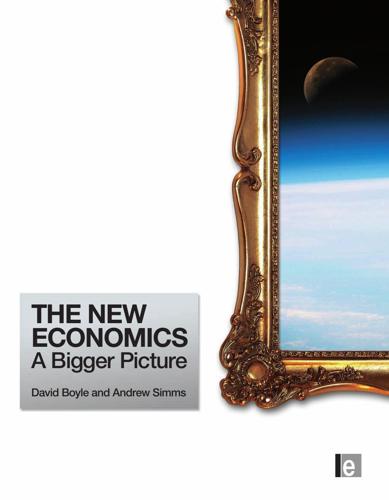
The New Economics: A Bigger Picture
by
David Boyle
and
Andrew Simms
Published 14 Jun 2009
An understanding that much human activity essential to human well-being, such as reproduction, home making and child rearing, is carried out, and is better carried out, in a non-monetary economy. Those engaged in such activity should not be excluded from the recognition, status and rewards accorded by society to productive work. An insistence on intergenerational equity, so that future generations have at least as good economic prospects as the present one. ‘Many of these features already exist to some extent in contemporary economics, although often only in embryonic form,’ he said, ‘and they are nearly everywhere dominated by opposite economic characteristics.’14 That was the problem.
…
(John Kenneth) 41, 51 gambling 14–15, 152 Gandhi, Mohandas (Mahatma) 18, 19, 21, 110, 112 Gates, Bill 141 Gates, Jeff 141–2 GDP (gross domestic product) 10, 32, 36–40, 42, 43, 54, 79 alternatives to 40–2, 43 bad measure of success 10, 37, 55, 78 INDEX global 141 UK 4 see also growth genetically modified crops see GM crops Germany 33, 50, 58 Gladwell, Malcolm 68 Global Barter Clubs 57, 58 global commons 113, 148 global currencies 56, 61, 120, 147–8 global greenback 61 global warming 3, 3–4, 115, 155 see also climate change globalization 8, 28, 143, 153 see also interdependence GM (genetically modified) crops 91, 117, 119, 140–1 Goetz, Stephan 124 gold standard 8, 143 Good Life, The (BBC sitcom) 69 goods, local 19, 109, 110 Goodwin, Fred 142 government borrowing 37–8, 49–50, 58, 62, 141 governments 2, 28, 116, 129, 158 creating money 58–9, 62, 90 propping up banking system 6, 7 Graham, Benjamin 120 Grameen Bank 26, 143–4, 153 Great Barrington (Massachusetts) 57, 151–2, 153 Great Depression 3, 36, 57 green bonds 157 green collar jobs 106, 157 Green Consumer Guide, The (Elkington and Hailes, 1988) 26, 69, 72 green economics 23, 100, 117 green energy 26, 97, 102–3, 114, 156, 157 Green New Deal 156–8 green taxation 153 greenhouse gas emissions 3–4, 115, 148 gross domestic product see GDP Gross National Happiness 43 growth 2, 11, 12–13, 23, 36–7, 38–40, 42, 43 185 bad measure of success 10, 158 maximizing 25 and poverty 4, 39–40, 81–2 and progress 39, 78 wealth defined in terms of 32 and well-being 4–5 see also GDP guilds 80, 80–1 happiness 12, 18, 29, 41, 43, 45–6 Happy Planet Index 32–3, 34, 43 Hard Times (Dickens, 1854) 36 HBOS 7 health 46, 72, 78, 96, 115, 129 health costs 117 healthcare 13, 33, 44 hedge funds 5, 7, 97, 120 Helsinki (Finland) 102 HIV/AIDS 70, 111, 135, 148 Honduras 139, 141 house prices 36, 46, 79, 83, 91, 126–7, 151 London 53, 54, 91 see also mortgages Howard, Ebenezer 105, 158 HSBC 5 human interaction 67–8, 74 human needs 20, 24, 67, 86 human rights 110–11, 116, 147 ill-health 35, 38, 46 ‘illth’ 29, 35 IMF (International Monetary Fund) 27, 82, 91, 135–6, 139, 143, 147, 147–8 incomes 24, 37, 43, 44, 78, 79, 81 and happiness 45–6 inequalities 37, 81, 82, 142 of poorest 4, 81, 82, 112, 142 Index of Sustainable Economic Welfare see ISEW India 82, 91, 110, 119, 136, 139–40, 153 indigenous knowledge 82, 117 inequality 4, 81–2, 96, 112–13, 116 inflation 8, 22, 58, 90 information technology 58, 59, 115 186 THE NEW ECONOMICS intellectual property 82, 91, 110, 113, 116, 117 interdependence 111–20, 135–8 Keynes on 19, 109, 110, 115, 143 see also globalization interest 8, 11, 11–12, 58, 77, 157 interest rates 144, 144–5 interest-free money 43, 73, 84, 90 intergenerational equity 25, 117 international bankruptcy 147 International Monetary Fund see IMF investment 14, 45, 53, 60, 104, 118, 137–8 ethical 26, 69–70, 74, 154 involvement 71, 75, 128–30 Iraq 49, 60, 136 ISEW (Index of Sustainable Economic Welfare) 40–1, 43, 78 Islamic banking 58, 90, 146 islands, small 31–2, 33–4 Italy 33, 119–20, 138 Ithaca hours currency 57, 58 It’s a Wonderful Life (film, Capra, 1946) 38 Jacobs, Jane 56, 110, 126 Jaffe, Bernie 126 Japan 26, 50, 91, 113, 119, 128 Jefferson, Thomas 18, 20 Jersey 52, 53 Jones, Allan 103 Jubilee Debt campaign 137 junk bonds 1, 142–3 just-in-time 123–4, 155 Keynes, John Maynard 2, 13–14, 15, 17, 21, 37, 55 on interdependence 19, 109, 110, 115, 143 international currency 61, 120 on local production 19, 109, 110 on ‘practical men’ as ‘slaves of some defunct economist’ 10, 35, 67, 87, 159 Keynesian economics 8, 18, 22, 27, 28 Kinney, Jill 130 Knowsley (Merseyside) 104 Kropotkin, Peter 18 Krugman, Paul 52 land 19, 82, 96 land tax 43 landfill 97, 98, 100, 107 Layard, Richard 41 Lehigh Hospital (Pennsylvania) 129 Letchworth Garden City (Hertfordshire) 105 lets (local exchange and trading systems) 57 liberalism 18, 19, 27 Lietaer, Bernard 56, 61, 120 life 19, 29, 55, 69, 86, 91 need for meaning 42, 75 life expectancy 31, 32–3, 82 life poverty 82–3 life satisfaction 31, 33, 41, 42 Lima (Peru) 130–1 Linton, Michael 57, 58 Living Economy, The (Ekins, 1986) 24–5 LM3 (Local Money 3) 60, 104–5 loans see debt Local Alchemy programme 152–3 local circulation of money 103–5, 107, 124, 151–2 local currencies 26, 56, 57, 58, 59, 60, 151–2, 153 local economies 26, 81, 85, 86, 105–7, 118, 124, 133 local exchange and trading systems (lets) 57 local food 2, 118, 119–20, 151 local governments 6, 44, 60 local life 4, 81, 158 Local Money 3 see LM3 local production 109, 116, 118 local savings schemes 61 local shops 75, 82–3, 104, 124, 124–5, 126, 151 supermarkets and 80, 105, 125 local wealth 14, 53–4 localization 155–6, 159 London 52, 53, 61, 97, 102, 103 house prices 53, 54, 91 traffic speed 65–6 INDEX London Underground 147 Lutzenberger, Jose 26 Macmillan Cancer Care 88–9 McRobie, George 22, 24 mainstream 4–5, 26, 154, 159–60 see also economics Malawi 135–6, 137 Malaysia 51 Manchester United 155 manipulated debt 139–41 markets 10, 12, 51, 70, 158 financial 1–2, 52, 53, 55, 138, 154–5 free 22, 85, 112–13 new economics and 67, 72–5, 85 Marsh Farm estate (Luton) 104–5, 152–3 Maslow, Abraham 67 materialism 12, 46–7 Max-Neef, Manfred 24 Maxwell, Robert 143 MDGs (Millennium Development Goals) 39, 136 Mead, Margaret 129 meaning, need for 42, 75 measurement problem 36–40 measuring 12, 42, 55, 85 success 2, 8, 10, 43, 44, 55, 154, 156, 158 value 10, 15, 29, 53, 59, 115 wealth 32, 37–40, 53–4 well-being 4, 18, 32–3, 34, 43 mechanics, Cuban 95–6, 97 medieval economics 78–80, 80–1 mega-rich 120, 141, 142 mental health 4, 35, 36, 46, 68, 83 Merck 99 micro-credit 26, 143–4, 145, 146, 151, 153 Milkin, Michael 142 Millennium Development Goals see MDGs minimum wage 92 misery, of UK young people 35–6 Mishan, E.J. 40 Mogridge, Martin 65–6, 74 Mondragon (Spain), cooperatives 153 money 8, 11, 13, 18, 27, 29, 36, 95 187 as a bad measure 10, 15, 18, 53, 59, 90, 143, 154 creating 7, 56–7, 58–9, 84, 90, 120, 138, 147 designed for money markets 53 economics and 25, 127 externalities 35 and life 55, 86, 154, 159 local circulation 103–5, 107, 124, 151–2 means to an end 15 new economics view 15, 59–60, 89 new ways of organizing 56–60 re-using 103–5 replacing with well-being 42 slowing down 51–2, 60 too little 57 types of 14–15, 57, 59, 120 and value 10, 15, 53, 59 and wealth 15, 19, 32, 38, 78 and well-being 18, 21, 81 see also GDP; growth; price; trickle down money flows 26, 50–2, 60, 103–5, 107, 124, 136–8 money markets 1–2, 52, 53, 55, 138, 154–5 money poverty 81–2 money system 7–8, 50–6, 60 monopolies 8, 20, 83, 84–6, 89–90, 125–6, 133, 146 Monsanto 85, 140 moral philosophy 12, 19, 72–3 morality 8, 18, 28, 74, 115 economics and 12, 19, 22 Morris, William 18, 78, 151 mortgages 1, 4, 5–6, 6, 7, 46, 91 working to pay 46, 68, 73, 77–8, 79, 81, 83, 84, 89, 126–7, 140 see also house prices motivations 4–5, 11, 67–9, 70, 71, 72, 73, 75 multinationals 14, 61, 84–5, 90, 137–8, 139, 143 multiple currencies 58, 59–60, 60, 90 multiplier effect 103–5 Murdoch, Rupert 52 188 THE NEW ECONOMICS Myers, Norman 117 Nanumaea (Tuvalu) 34 national accounting 37–8, 38–9 national debt 49–50, 83, 84, 139, 141 national grid 102, 106 National Health Service see NHS natural capital 3, 99 natural resources 22, 40, 43, 84, 97–8 needs 20, 24, 25, 67, 75, 86 basic 25, 89, 91–2, 115 nef (the new economics foundation) 24, 26, 45, 71, 104, 131–2, 145 Local Alchemy programme 152–3 see also Happy Planet Index; LM3 ‘neo-liberal’ policies 8, 27–8 Nether Wallop (Hampshire) 80, 81 The Netherlands 58, 106, 138 New Century 5 New Deal for Communities 152 New Deal (US) 157 new economics 2–3, 9–10, 18–19, 28–9, 59, 153–4, 159–60 Cuba as object lesson 96–7 history of 9–10, 18–19, 21–7 and the mainstream 26 as new definition of wealth 15 principles 35, 157–8 new economics foundation see nef New York City 52, 128 News Corporation 52 NHS (National Health Service) 87, 114, 131 Northern Rock 6 Nottingham 35 Nu-Spaarpas experiment 106 Obama, Barack 154, 157 obsolescence, built-in 98, 100, 101 odious debt 146 offshore assets 136–7 offshore financial centres 52–3, 61 oil 3, 96, 115, 117, 155 Oil Legacy Fund 157 orchards 111, 112, 115, 124 organic food 26 Ostrom, Elinor 127 out-of-town retailing 75, 80, 123, 132 overconsumption 32, 40, 44, 113 Owen, Robert 57 ownership 11, 46, 60, 91, 118, 156 paid work 87–9, 92 palm oil 112 Partners in Health 130–1 peak oil 3, 96, 117, 155 Pearce, David 25–6, 98, 115 Peasants’ Revolt (1381) 18 pensions 7, 44, 61, 73, 155 people, as assets 15, 57–8, 128–9, 130, 131 permit trading 45, 117–18, 148 personal carbon allowances 45, 117–18 personal debt 7, 36, 83–4, 91, 140, 141 Petrini, Carlo 119–20 Pettifor, Ann 135, 137 philanthropy 130, 133 policy makers 28, 35, 73, 87, 90 assumptions of 67, 68, 73, 128 Keynes on 10, 35, 67, 87, 159 political agenda 42–7 politicians 11, 54, 159 politics, new 159 pollution 10, 35, 37, 40, 98, 112, 114 by GM genes 91, 117, 119 poor 29, 145–6 Porritt, Jonathon 23 post-autistic economics 9–10, 71–2 poverty 4, 23, 35, 79–80, 81–2, 127 economic system and 13–14, 18, 29, 81–2, 154 interdependence leading to 111–15 reduction 39–40, 51–2, 61, 116, 124–5 poverty gap 4, 52–3, 78, 82 power 10, 12, 25, 28, 53, 141–2 corporate 20, 28, 85 monopoly power 83, 89–90, 125–6, 146 power relationships 29, 114 price 10, 67, 72, 73, 115, 153 Price, Andrew 132 INDEX prices 80, 156, 158 Pritchard, Alison 23 product life cycle 97–8, 101 professionals 130, 132, 133, 159 profits 12, 13, 99 progress 36, 37–8, 39, 43, 44, 77–8, 81–2, 84 Proudhon, Pierre-Joseph 120 psychology, economics and 67–8, 71, 72–3 public goods 148 public sector commissioning 131–2, 133 public services 45, 74, 127–32, 158 public transport 66, 74 ‘purchasing power parity’ 81 Putnam, Robert 126–7, 127–8 189 retirement 46, 73 see also pensions rewarded work 88 rewards 7, 8, 11, 25, 92, 141, 142 roads 66, 115 Robertson, James 17, 22, 23, 55, 145 Rockefeller, John D. 28 Roman Catholic church 19, 21, 117 Roosevelt, Eleanor 96 Roosevelt, Franklin Delano 157 Rotterdam (The Netherlands) 106 rubbish 97–105 Rupasingha, Anil 124 Rushey Green surgery (London) 131 Ruskin, John 17–18, 18, 29, 35, 78, 81 Russia 110 qoin system 58 rainforests 4, 10, 111, 112 ‘rational man’ assumption 10, 71 RBS 142 re-use 97, 99, 100–5 Reagan, Ronald 22, 27 real money, generating 120 ‘real’ wealth 2, 32, 36–40 reciprocity 44, 128, 128–30, 133 see also co-production recycling 97, 98, 100–1, 105–6, 106–7 redistribution 19, 27, 52, 96 regeneration 27, 104, 105, 107, 116, 124, 128 regional currencies 58, 59, 60 regulation 129, 156 competition 85, 113, 125, 126, 133 financial sector 53, 85, 157 relationships 4, 69, 83, 128–30 remittances 137 Rendell, Matt 33 renewable energy 26, 97, 102, 102–3, 114, 156, 157 repair 97, 98, 101, 105, 107 resources 32, 43, 97–8, 99, 100–1, 114, 158 local 25, 115 natural 22, 40, 43, 84, 97–8 St Louis (Missouri) 131 Samoa 34 Sane (South African New Economics) 58 saving seeds 91, 117, 119, 141 savings 7, 46, 73, 90, 157 schools 131 Schor, Juliet 83 Schumacher, E.F.
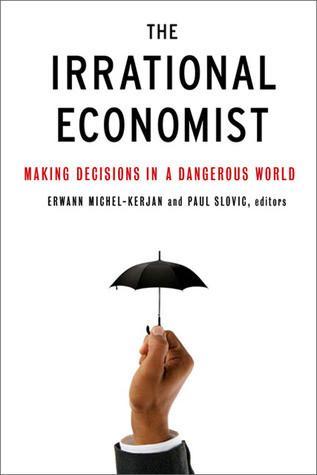
The Irrational Economist: Making Decisions in a Dangerous World
by
Erwann Michel-Kerjan
and
Paul Slovic
Published 5 Jan 2010
In terms of representing citizens’ values and preferences in this process, direct methods such as surveys are likely to be impractical because of the very characteristics of the climate change problem (i.e., uncertainty, complexity, and large delays between action and outcome). How to shape, inform, and represent individual preferences in this context remains a largely open question. 3. Intergenerational equity, irreversibility, and intertemporal choice: Legitimation problems are particularly difficult in these areas because it is impossible to bring all the affected parties into the decision context at the time policy choices are made. The special problems of intergenerational equity (meaning all the future generations who will be affected by our actions today but who are not yet born) and irreversibility have been at the heart of the climate change debate, just as they were for disputes about radioactive waste.
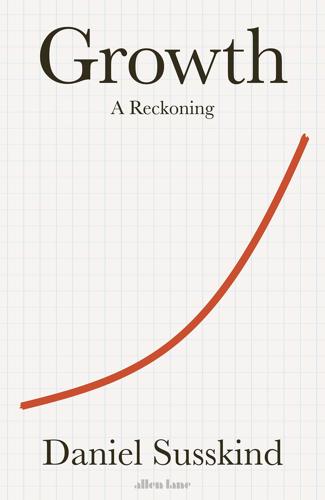
Growth: A Reckoning
by
Daniel Susskind
Published 16 Apr 2024
– the second is ‘dynamic’: how much should we care about the future? Or, more practically, what proportion of our resources should we divert from helping people in the present to help those in the future – not only our children or our grandchildren, but the generations that come after? This is the famous problem of ‘intergenerational equity’. A key concept here is the ‘discount rate’, a highly contested number that captures precisely how much we ought to care about future costs and benefits relative to those in the present. (The choice of rate, in the words of distinguished economist Martin Weitzman, ‘is one of the most critical problems in all of economics’.)11 This second moral question also looms in every interaction with the growth dilemma.
…
K., 90, 92, 305n56; The Affluent Society (1958), 154 Galton, Francis, 42 Ganesh, Janan, 93 Gates, Bill, 85–6, 237, 243 Georgescu-Roegen, Nicholas, The Entropy Law and the Economic Process (1971), 152–3, 160 gig economy, 108 Gini coefficients, 102–3 Glennerster, Rachel, 291n65 globalization, costs of, 115–19, 256–7 Glorious Revolution (1688), 46–7 Google, 189 Gordon, Robert, 93, 175 Gorz, André, 160 Great Depression, 62–3, 75–7 Great Stirrup Controversy, 111 ‘green growth’, 162–3, 222–3, 236–7 greenhouse effect, 100 Gross Domestic Product (GDP): adopted by UN, 72; creation of, 56–7, 62, 66–7; and the Marshall Plan, 71–2; moral limits to, 132–9; technical limits to, 127–32 Habakkuk, Hrothgar, 28 Han Fei, 123 Hansen, Alvin, 175 happiness, economics of, 86–8 Harford, Tim, 182 Harrod, Roy, 28 Harrod-Domar model, 28–31, 32, 58, 286n27 Harvard University, 198 Hassabis, Demis, 201 Hayek, Friedrich, 216, 272 Heilbroner, Robert, 26 Heisenberg, Werner, 196 Hemingway, Ernest, 305n51 Hesse, Carla, 322n14 Hickel, Jason, 154, 163 Hicks, John, 210 Higgs, Peter, 197 Higgs boson particle, 196–7 Hobbes, Thomas, 12 Hobsbawm, Eric, 38, 277n4 Hodgson, Godfrey, 89, 304n48 Holmes, Oliver Wendell, 193 Hoover Institution, 216, 218 Huawei (company), R&D (Research & Development), 188 Hugo, Victor, 181 human capital, 36–7 Hume, David, 272 hunter-gatherer communities, high standard of living, 12–13 IBM, patents, 182 illegal activities, and GDP, 134–5 immigration, and new ideas, 190–1 Industrial Revolution, 209–10 inequality: and accumulated wealth, 256; and economic growth, 101–6; and innovation, 191–4 intellectual property (IP), 178–86 intergeneration equity, 257 Intergovernmental Panel on Climate Change, 151 International Energy Agency (IEA), 238–9, 241 International Monetary Fund (IMF), 66, 115 inventors, and inequality, 191–4 iPhone, 190 Ireland, citizen assemblies, 266 Irish Potato Famine, 19–20 Italy, GDP ranking, 130–1 J. P. Morgan, 136 Jackson, Tim, 219, 254, 310n51 Jahoda, Marie, 118 Japan, nursing robots, 210–11 Jefferson, Thomas, 289n45 Johnson, Boris, 231–2 Jones, Charles, 158, 287n32, 288n40 JSTOR (journal archive), 185 !

Tyler Cowen - Stubborn Attachments A Vision for a Society of Free, Prosperous, and Responsible Individuals
by
Meg Patrick
These secondary standards are common sense and would be found in most plausible ethical theories. 60 Chichilinisky (1997) suggests a modified version of the overtaking criterion that does not force the present time period to count for nothing. We could entertain such an alternative if in fact we did face an infinite time horizon and a “dictatorship” problem. Note also that with an infinite horizon the overtaking criterion will fail to satisfy certain axioms of intergenerational equity, such as anonymity or indifference across labeling decisions. On the difficulties of satisfying all reasonable axioms in an infinite horizon setting, see for instance Fleurbaey and Michel (2003) and Sakai (2003). Asheim, Buchholz, and Tungodden (2001) respond to some charges of this kind.
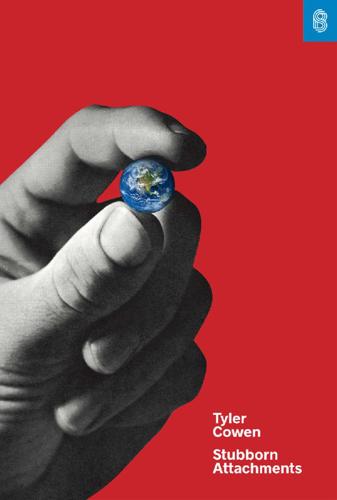
Stubborn Attachments: A Vision for a Society of Free, Prosperous, and Responsible Individuals
by
Tyler Cowen
Published 15 Oct 2018
Chichilnisky (1997) suggests a modified version of the overtaking criterion that does not force the present time period to count for nothing. We could entertain such an alternative if in fact we did face an infinite time horizon and a “dictatorship of the future” problem. Note that with an infinite horizon, the Overtaking Criterion will fail to satisfy certain axioms of intergenerational equity, such as anonymity or indifference across labeling decisions. On the difficulties of satisfying all reasonable axioms in an infinite horizon setting, see for instance Fleurbaey and Michel (2003) and Sakai (2003). Asheim, Buchholz, and Tungodden (2001) respond to some charges of this kind.
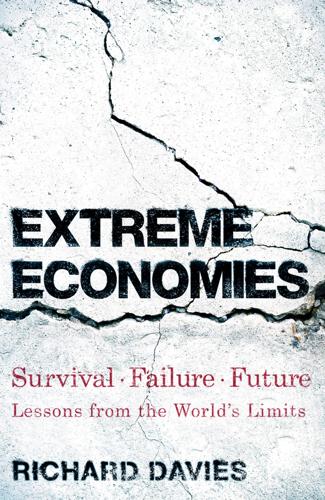
Extreme Economies: Survival, Failure, Future – Lessons From the World’s Limits
by
Richard Davies
Published 4 Sep 2019
The ancestor household in Japan; respect for elders On the concepts of oyakoko and ie in the ancestor household, see Yoshimitsu (2011). For the impact of Confucian concepts on economic outcomes – for example, corporation organization – see Nakane (1970) and Kumagai (1992). Intergenerational inequality A recent review of intergenerational equity is given by Motoshige (2013). An early paper on the risk pension reforms posed to Japanese notions of solidarity is Takahashi (2004). On government programmes that aim to bring generations together, see Larkin and Kaplan (2010). The two samurai Oda Nobunaga, born in 1534, played an important role in unifying Japan.
…
Mervin, M., et al. (2018), ‘The Cost-effectiveness of Using PARO, a Therapeutic Robotic Seal, to Reduce Agitation and Medication Use in Dementia: Findings from a Cluster-randomized Controlled Trial’, Journal of the American Medical Directors Association, 19 (7), 619–22. Morikawa, M. (2018), ‘Labor Shortage Beginning to Erode the Quality of Services: Hidden Inflation’ (Toyko: Research Institute of Economy, Trade and Industry). Motoshige, I. (ed.) (2013), Public Pensions and Intergenerational Equity, NIRA Policy Review No. 59 (Tokyo: National Institute for Research Advancement (NIRA)). Moyle, W., et al. (2017), ‘Use of a Robotic Seal as a Therapeutic Tool to Improve Dementia Symptoms: A Cluster-randomized Controlled Trial’, Journal of the American Medical Directors Association, 18 (9), 766–73.
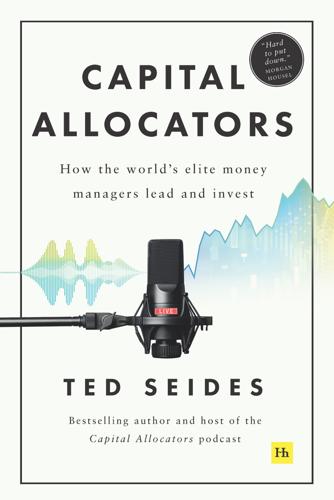
Capital Allocators: How the World’s Elite Money Managers Lead and Invest
by
Ted Seides
Published 23 Mar 2021
Everything that follows is geared towards implementing a disciplined strategy based on those beliefs. The heart of an investment strategy beats around the purpose for the capital. It influences the investment time horizon, preferences of stakeholders, policy portfolio, and structure of the investment effort. Purpose Endowments are tasked with managing intergenerational equity, balancing spending today with preserving the purchasing power of assets for future generations of scholars. Andy Golden refers to his horizon as BLT, or beyond the long term. He strives to not just produce the best possible results over the next 10 years, but also to make sure that at the end of those 10 years, Princeton has a program with unfair advantages for the subsequent 10 years.
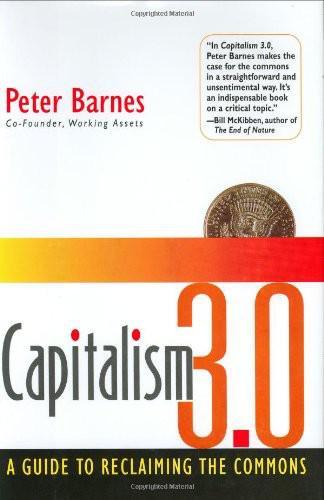
Capitalism 3.0: A Guide to Reclaiming the Commons
by
Peter Barnes
Published 29 Sep 2006
Imagine further, where appropriate, that they control valves that regulate aggregate use of scarce commons. Then play with quantities, prices, and income streams. If numerical precision isn’t possible, use orders of magnitude. See what happens to GDP and the commons side of the ledger, to intra- and intergenerational equity, and to nature. Then report your findings to the world. If you’re not a modeler, work on institutional design. How should trusts be structured? What assets should they manage? What property rights should they own? Remember that property rights and operating systems aren’t fixed forever. They’re evolving social arrangements, and you can affect them.
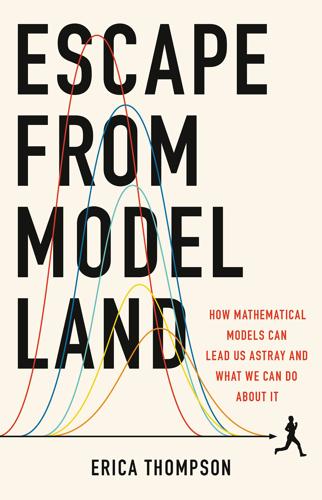
Escape From Model Land: How Mathematical Models Can Lead Us Astray and What We Can Do About It
by
Erica Thompson
Published 6 Dec 2022
The other part of the discount rate is an ethical judgement about the degree to which people’s consumption now matters more than people’s consumption in the future. If you think, for example, that people in the future will be wealthier than people now, then it may make sense to spend money now and let the future take care of itself. Or you may say that intergenerational equity means that we should value our grandchildren’s quality of life equally to our own, and therefore the moral case is to set this discount rate to zero. There are strong disagreements in the economic literature about the appropriate value of this parameter, and both extremes can cause problems for the models.
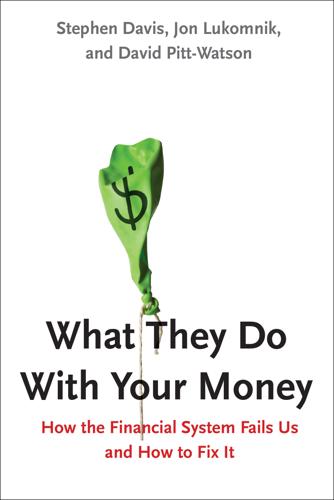
What They Do With Your Money: How the Financial System Fails Us, and How to Fix It
by
Stephen Davis
,
Jon Lukomnik
and
David Pitt-Watson
Published 30 Apr 2016
But while some citizen investors need to draw cash from their accounts every month, others won’t require access to it for decades. A revised policy should resurrect the long-ignored “duty of impartiality,” which obligates an institution to weigh the interests of these different beneficiaries.20 Some call this “intergenerational equity”: younger investors’ need for patient capital must be balanced against retirees’ need for short-term payouts.21 The duty of impartiality could emerge organically through the courts, if cases asserting breaches produce judgments that reemphasize it, but most advocates believe the vacuum may require legislation or regulation.
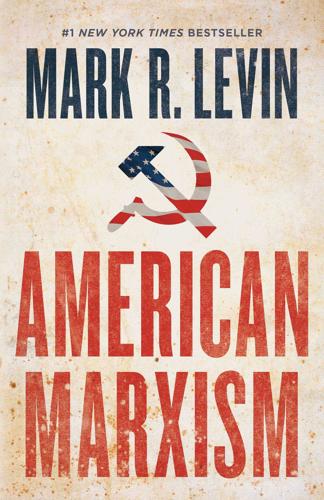
American Marxism
by
Mark R. Levin
Published 12 Jul 2021
Among other things, the agreement commits signatories to “[a]cknowledg[e] that climate change is a common concern of humankind, [and therefore] Parties should, when taking action to address climate change, respect, promote and consider their respective obligations on human rights, the right to health, the rights of indigenous peoples, local communities, migrants, children, persons with disabilities and people in vulnerable situations and the right to development, as well as gender equality, empowerment of women and intergenerational equity.”73 One of the signatories to this agreement is Communist China, which is currently running concentration camps, where more than 1 million Uyghurs and other minorities are being enslaved, tortured, and raped, and where Uyghur women are sterilized and prisoners are summarily executed.74 Indeed, on January 19, 2021, the Trump administration formally accused China of committing “genocide and crimes against humanity” in its oppression of Uyghur Muslims in its Xinjiang region.75 However, on February 16, 2021, when asked about China’s conduct during a CNN town hall, Biden said, in part: “If you know anything about Chinese history, it has always been, the time when China has been victimized by the outer world is when they haven’t been unified at home.
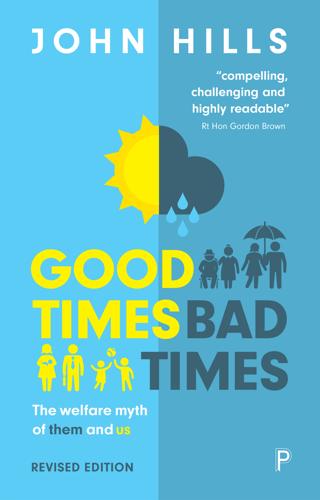
Good Times, Bad Times: The Welfare Myth of Them and Us
by
John Hills
Published 6 Nov 2014
Indeed, the incomes of those born at the start of the 1970s were lower in real terms in their early forties than those for their predecessors born 10 years earlier at the same age; indeed, they had almost fallen back to those of the generation born in the 1950s at the same age.14 Second, compounding this, the generations born in the 1960s and 1970s are saving less than their predecessors did at the same age; indeed, those born in the 1970s have been spending greater amounts than their incomes – running up debts – even in their twenties and thirties, unlike earlier generations.15 They are also entering home homeownership more slowly than their predecessors, and the employer pension rights they are accumulating are usually of a much less valuable kind.16 It is hardly surprising, then, that these differences are highlighted in debates about ‘intergenerational equity’. Books such as (former Minister for Higher Education) David Willetts’ The pinch: How the baby-boomers took their children’s future – and why they should give it back and Ed Howker and Shiv Malik’s Jilted generation: How Britain has bankrupted its youth tell the story in their sub-titles alone.17 But another look at Figure 6.3 suggests that the story is more subtle than this.

What's Next?: Unconventional Wisdom on the Future of the World Economy
by
David Hale
and
Lyric Hughes Hale
Published 23 May 2011
The UNFCCC has been ratified almost universally, with a membership of 194 parties along with the European Economic Community. The objective of the Convention is the stabilization of greenhouse gas concentrations “at a level that would prevent dangerous anthropogenic interference with the climate system” (UNFCCC, Art. 2). Key principles (Art. 3) under the Convention include (1) intergenerational equity; (2) consideration of mitigation and adaptation costs for developing countries; (3) the precautionary principle, which, tempered by cost-effectiveness, should be the basis for action; (4) sustainable development, recognizing that economic development is necessary to enable mitigation; and (5) promotion of open international economic systems and repudiation of unjustifiable restrictions on international trade, including on measures taken to combat climate change either unilaterally or otherwise.
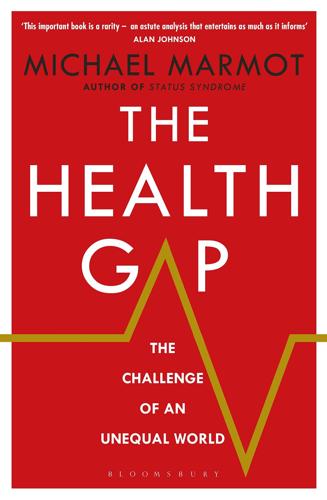
The Health Gap: The Challenge of an Unequal World
by
Michael Marmot
Published 9 Sep 2015
In 2012, Alan Krueger, Chairman of the President’s Council of Economic Advisors, demonstrated the correlation between inequality and social immobility between generations, which has been dubbed the Great Gatsby Curve – perhaps not only referring to accumulation of great wealth, but to the influence of one’s past history on present circumstances (see the quote at the opening of this chapter). The graph in Figure 4.5 shows that the growth of income inequality is not just inequitable for the present adult population, it diminishes life chances for the next generation – it diminishes equity between generations (intergenerational equity). FIGURE 4.5: INEQUALITY IS NOT JUST BAD FOR MUM AND DAD The term ‘intergenerational earnings elasticity’ plots the resemblance between the earnings of parents and the earnings of their adult children. To explain: if the next generation’s earnings were exactly the same as their parents – rich parents → rich children, middle-income parents → middle-income children, poor parents → poor children – then a country would score high on intergenerational earnings elasticity and would have low social mobility between generations.
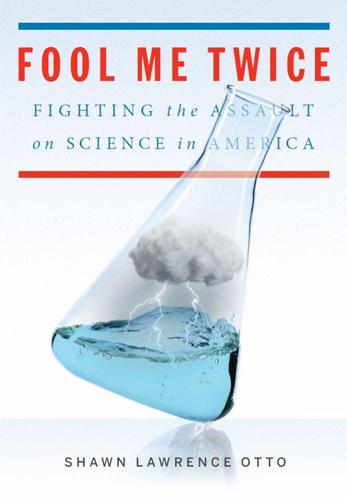
Fool Me Twice: Fighting the Assault on Science in America
by
Shawn Lawrence Otto
Published 10 Oct 2011
We have inherited it; we can invest it, even borrow from it, but we should never spend it down because it supports our ongoing operations and delimits our future growth. So how do we arrive at values for natural public capital? How do we deal with uncertainty, inequity in distribution of wealth, intergenerational equity? And how do we put a value on things that don’t have a market price, like our love for our children? A FULL ACCOUNTING In 1997, ecological economist Robert Costanza set out to answer those questions. He and a team of fellow researchers embarked on a quest for metrics that would put a value on the ecosystem services that nature provides to our economy.11 Published, appropriately, in the journal Nature, the paper had a powerful effect because it put a price tag on the commons, showing that the annual value of the world’s ecosystem services to the economy was at least $33 trillion, or nearly twice as much as the $18 trillion that made up the world’s combined gross national product—the sum total annual value of each nation’s traded goods and services—and possibly as much as $54 trillion, depending on certain assumptions.
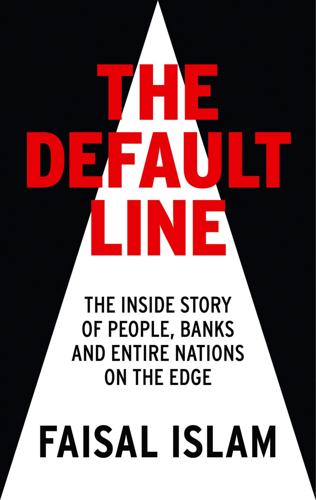
The Default Line: The Inside Story of People, Banks and Entire Nations on the Edge
by
Faisal Islam
Published 28 Aug 2013
It perhaps makes little economic sense. The minimum wage could be an important policy lever to bridge the gap. But large rises in the minimum wage could also imperil some forms of reshoring and reindustrialisation. More local discretion over minimum wage levels is probably worth exploring. DEFAULT LINE #2: Housing and intergenerational equity A different form of state action on living standards could be this: an all-encompassing strategy to make things cheaper: housing, education, transport, energy and food. Housing obviously has a rather bizarre status in the inflationary firmament. It is the only basic material need for which a price increase is supposed to be a cause of celebration.

The State and the Stork: The Population Debate and Policy Making in US History
by
Derek S. Hoff
Published 30 May 2012
Economist Ralph Hess suggested in The Foundations of National Prosperity, a 1917 collection of essays edited by Richard Ely, “Settlement and industries should be so located as to secure the fullest possible benefits from the natural resources of the country, as well as the benefits of mechanical development and scientific discoveries.”160 Meanwhile, the spread of electrification in the 1920s enhanced the locational flexibility of American firms—and thus supported calls for the state to engineer new economic geographies.161 Resource economists focused on localized pockets of overpopulation where resources had become exhausted but people remained—for example in Appalachia and in the “cut-over” lands of northern Wisconsin and Minnesota, where the timber industry left depleted forests and an economically redundant surplus population in its wake.162 Within the federal government, a Department of Labor study called Employment and Natural Resources, penned by Benton MacKaye, subsequently a co-founder of the Wilderness Society and a leading midcentury conservationist, called for new governmentsponsored communities on public lands to combat inefficient land use (and the deceasing real wages of the American worker).163 US Department of Agriculture economists also promoted the idea of engineering population movements. The key figures here were Lewis Gray, whose work on intergenerational equity and the renewability rates of natural resources pointed the way toward today’s economic analysis of environ- chapter 2 70 ments,164 and Oliver E. Baker, Gray’s colleague in the Bureau of Agricultural Economics. They argued for more comprehensive federal policies expanding the agricultural lands of the nation so as to feed a growing population.165 Concern with industrial decline in certain regions is not identical to classic Malthusianism; in some cases, resource economists assumed that the solution to exhausted resources in one location was to pick up and find new virgin areas to exploit.

Grand Transitions: How the Modern World Was Made
by
Vaclav Smil
Published 2 Mar 2021
HDI is a composite that aggregates national scores for three dimensions (a long and healthy life, being knowledgeable, having a decent standard of living) but it is not concerned with inequality, poverty, and human security. The World Economic Forum now publishes its Inclusive Development Index (IDI), which measures how countries perform on 11 dimensions of economic progress in addition to their GDPs (WEF 2018). Its three pillars are growth and development, inclusion, and intergenerational equity (including sustainable stewardship of natural and financial resources). Neither of these indices deals with environmental degradation that obviously detracts from quality-of-life gains, but a proposal by Daly and Cobb (1989) to include it in the per capita Index of Sustainable Welfare (ISEW) was never developed into an accepted tool.

A Generation of Sociopaths: How the Baby Boomers Betrayed America
by
Bruce Cannon Gibney
Published 7 Mar 2017
And that calculation of wealth does not include Social Security or pensions, which probably drag the entire Boomer cohort into positive territory; everyone else did and probably will do worse.8 The Boomers’ extraction of wealth from other generations helps explain why the Organisation for Economic Cooperation and Development (OECD) ranked the United States dead last among peers in a 2013 survey of “intergenerational equity.”9 The United States, an “outlier” among developed nations, had an “exceedingly high” rate of child poverty (21 percent), compared to Northern Europe (4–7 percent). Achieving lower rates of senior poverty at the expense of the young, present and future, has been a choice. Per the OECD, US spending on the old outpaces spending on the young by almost 5:1.
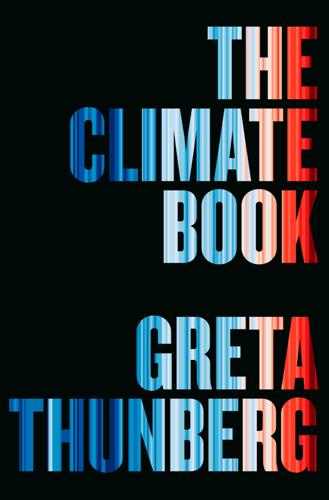
The Climate Book: The Facts and the Solutions
by
Greta Thunberg
Published 14 Feb 2023
For a long time, we have been taking care of nature not only for us but also for the seven generations to come. This is how decision-making is done in my community. Before deciding anything important, one should consider what the past seven generations would have done in the situation and what the impact of a decision for the seven upcoming ones will be. It’s a way to put intergenerational equity at the core of every important decision. Now the time has come for the global community to listen to my people, and to help them. For too long, Indigenous peoples have been considered representatives of our Earth’s history. But we don’t belong to the past: we represent the future. This is the case for Indigenous communities all over the world.
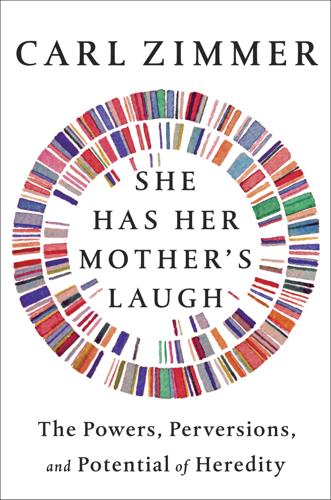
She Has Her Mother's Laugh
by
Carl Zimmer
Published 29 May 2018
Kun, Ádám, András Szilágyi, Balázs Könnyű, Gergely Boza, István Zachar, and Eörs Szathmáry. 2015. “The Dynamics of the RNA World: Insights and Challenges.” Annals of the New York Academy of Sciences 1341:75–95. Kuzma, Jennifer, and Lindsey Rawls. 2016. “Engineering the Wild: Gene Drives and Intergenerational Equity.” Jurimetrics 56:279–96. Kwiatkowski, D. P., G. Busby, G. Band, K. Rockett, C. Spencer, Q. S. Le, M. Jallow, E. Bougama, V. Mangana, and L. Amengo-Etego. 2016. “Admixture into and Within Sub-Saharan Africa.” eLife 5:e15266. Lai-Cheong, Joey E., John A. McGrath, and Jouni Uitto. 2011.